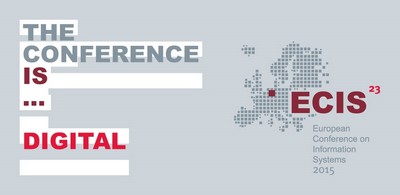DOI
10.18151/7217430
Abstract
Enterprise social networks (ESNs) are increasingly added to organizational IT infrastructures for more inclusive, open, and “social” communication. Many organizations recognize the potential benefits that ESNs can offer for improved team collaboration. Albeit there is extensive research testing the effects of general IT support on teams, it is still poorly understood what activities teams perform to realize the ESN's potentials and to foster team collaboration. Drawing on our revelatory case study, we contribute to addressing this research gap by exploring this special case of an organization that uses an ESN for all work-related matters. Our findings describe four effects of team collaboration emerging from ESN-supported social and structure activities. Social activities emphasize interactions on the relationships among team members, whereas structure activities emphasize interactions on objects, including content and processes. We explain tensions within the effects of (1) unified, collective, yet relevant communication, (2) visible, active, yet controlled participation, (3) formalized, guiding, yet flexible processes, and (4) reusable, yet maturing information objects with team states, challenges and responses identified in team collaboration.
Recommended Citation
Merz, Alexander B.; Seeber, Isabella; and Maier, Ronald, "Social Meets Structure: Revealing Team Collaboration Activities and Effects in Enterprise Social Networks" (2015). ECIS 2015 Completed Research Papers. Paper 134.
ISBN 978-3-00-050284-2
https://aisel.aisnet.org/ecis2015_cr/134


